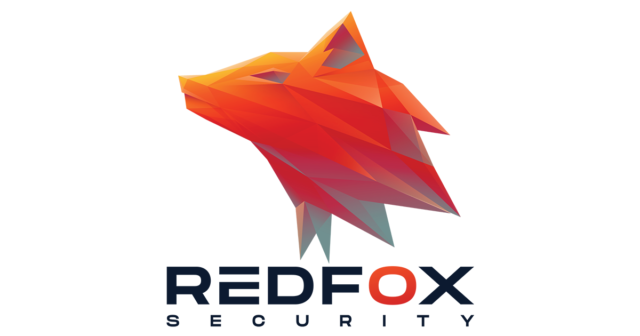Small and medium-sized businesses (SMBs) are quickly adopting online business models to increase brand recognition and customer base, which places them at risk from cyberattacks. Unfortunately, security protocols have historically not been prioritized among SMBs, leading to an alarming spike in cyberattacks. In this blog, we will outline ten cybersecurity tips to protect small and midsized businesses’ websites, customer data, and systems against cyber threats.
Cybersecurity Threats for SMBs
SMBs face many cybersecurity threats, and it’s essential to understand them to implement the right security protocols. Some of the most common cybersecurity threats for SMBs include:
1) Phishing Attacks
Phishing attacks have become more sophisticated over the past few years, evolving beyond basic phishing emails into complex deepfakes that are surprisingly effective. Cybercriminals use phishing attacks to mislead employees into providing valuable data. To protect against these attacks, SMBs can use anti-phishing software and educate their employees about phishing attack techniques.
2) Credential Theft
Cybercriminals often target credentials like tokens, session cookies, digital certificates, user ID and password combinations, and other access-based keys. They can use those credentials to get inside your network and steal valuable data. SMBs should employ multi-factor authentication and inform employees about the risks of creating weak passwords to protect against credential theft.
3) Web-Based Attacks
Web-based attacks aim to gain entry into the systems that store or interact with your data via services exposed on the internet, such as websites, applications, and APIs. Hackers typically exploit a vulnerability within an operating system or an associated application.
4) Zero-Day Attacks
Zero-day attacks target software vulnerabilities before the vendor knows about the issue or can develop a patch. To protect against zero-day attacks, SMBs should regularly update their software and web app dependencies.
Tips to Help SMBs Protect Themselves Online
Securing an SMB doesn’t need to be costly or complex; here’s a list of tips designed to assist them in protecting their web applications, customer data, and systems against cyber threats.
1. Adopt and Enforce the Least-Privilege Model
Provide users with as much access to systems and information as they need to complete their duties. Strictly enforcing the least-privilege principle limits the damage a user can do, either deliberately or accidentally, and it similarly limits the reach of an attacker or malware that takes over a user’s credentials.
2. Use Layers of Security
The best computer security for small businesses involves layers. SMBs should conduct penetration testing of web applications and educate employees to use multi-factor authentication on their accounts to strengthen security systems and make it harder for criminals to mount attacks. These basic steps will strengthen their defenses against attacks from outside.
3. Monitor Your Environment for Suspicious Activity
Monitoring activity and changes across your environment is one of the most important security best practices. Quickly spotting suspicious changes and access events can help you detect an attack in time to prevent real damage.
4. Centralize Hardware Management
Centralize management of on-site hardware and mobile devices that travel with employees, including establishing a baseline configuration for different devices. Maintain a detailed asset inventory of all equipment, and audit your network logs for unauthorized device access.
5. Strengthen Your Password Policy
Enforce strong authentication and implement strict password security policies across your organization. Be sure to communicate password policies clearly and explain why creating strong passwords and protecting them is vitally important.
6. Reduce Attack Surface Area
All SMB systems, services, and web applications accessible over the internet comprise an attack surface; as their exposure increases, so does cyber risk. Vulnerable content management systems like WordPress or Drupal with third-party APIs could allow for brute forcing or credential-stuffing attacks. Enterprises should perform penetration testing of web applications while training employees to utilize multi-factor authentication on their accounts for optimal protection.
7. Protect Business and Customer Data
Businesses must safeguard themselves against ransomware attacks and malware infections to keep themselves secure against ransomware attacks and infections, which have seen an exponential increase in recent years. Businesses should, therefore, regularly back up data to be safe against ransomware infections or any other contamination that may come their way. By backing up data regularly, businesses can easily reverse any adverse situations caused by ransomware (encryption) or malware (infection), retrieving files from an alternate location without delay.
8. Train and Educate Employees and Staff
Cybersecurity surveys often report increased cyber threats such as phishing, fraudulent emails, and malware attacks against small to midsize businesses (SMBs). Therefore, SMBs must educate their employees about these dangers and the repercussions while training staff members on maintaining good cyber hygiene to recognize potential cyber risks and respond accordingly.
9. Implement Policies and Protocols
SMBs should create and communicate detailed cybersecurity policies to their staff and employees, including restrictions such as not visiting unknown websites, using MFA for account protection, and not using personal pen drives in office systems, among other measures.
10. Continued Network and Application Monitoring
Businesses operating 24/7 online remain vulnerable to cyber-attacks from remote cyber criminals. Cybercriminals frequently use readily available tools to search for weaknesses in a system and exploit any weaknesses discovered, while constant monitoring by either humans or tools is key in detecting website defacement or network threats.
TL;DR
Cybersecurity is essential to both small and mid-sized businesses alike. Implementing the right security protocols can help protect against cyber threats and prevent data breaches. SMBs should adopt and enforce the least-privilege model, use layers of security, monitor their environment for suspicious activity, centralize hardware management, strengthen their password policy, minimize the attack surface, backup business and customer data, keep their employees and staff aware and trained, set policies and protocols, and continuously monitor their network and applications. By following these cybersecurity tips, SMBs can protect their web applications, customer data, and systems against cyber threats.
Redfox Security is a diverse network of expert security consultants with a global mindset and a collaborative culture. If you are looking to improve your organization’s security posture, contact us today to discuss your security testing needs. Our team of security professionals can help you identify vulnerabilities and weaknesses in your systems, and provide recommendations to remediate them.
“Join us on our journey of growth and development by signing up for our comprehensive courses.“




